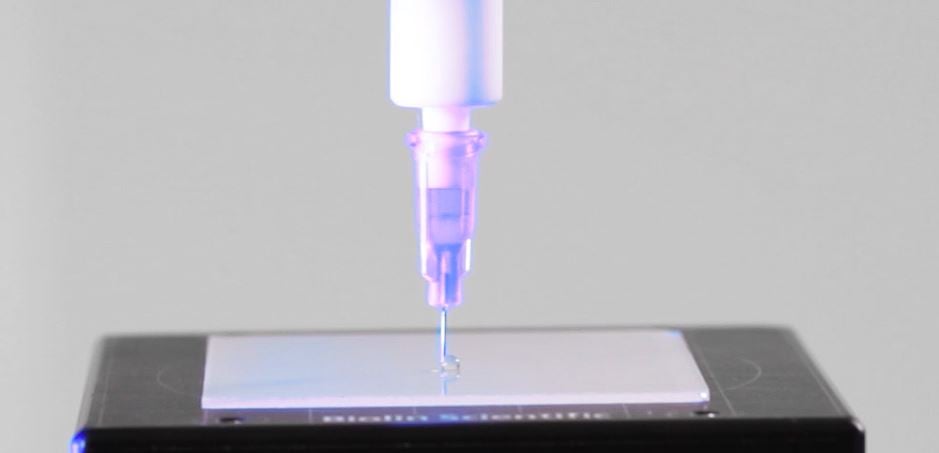
Dynamic contact angles provide information about contact angle hysteresis, which originates from the properties that differ from the ideal surface. Therefore, the dynamic contact angle measurement can indicate chemical and topographical heterogeneity. The advancing and receding values dynamic contact angles are extremes of the possible contact angle range.
There are several methods for measuring dynamic contact angles. The needle method has gained popularity since it doesn't require any additional accessories apart from an automated dispenser. It is also a quite simple method in theory as the volume of the droplet is simply increased and decreased on the surface. However, the results are prone to vary from operator to operator as no standardized way of interpreting the results have been developed.
One of the disadvantages of the needle method has been the difficulty to interpret the results. This has somewhat hindered its use outside the academic setting. By making the measurement and analyzes completely automated, reduces the human error that can affect the results.
The measurement itself is done by placing the needle close to the sample surface. The recipe defines the dispensing time and rate for advancing contact angle measurement. The measurement is started by pressing the play button. Dispensing of the liquid is continued the time defined in the recipe. After that, the receding measurement is automatically started. The measurement continues the time defined in the recipe for the receding contact angle measurement. The software records a contact angle as a function of baseline, which is used to get advancing and receding contact angles as well as contact angle hysteresis.
To see how the measurement is done in practice, please watch the video through the link below.
Receding contact angle is the lowest possible contact angle on a given surface. Receding angle is measured on previously wetted surface.
Contact angle hysteresis can tell you about the homogeneity of your surface coating.
One should always measure the advancing and the receding contact angle to get the true picture of the surface wettability.
Due to a wide range of applications, the measurement of wettability, i.e., the contact angle measurement can be done with several different methods.
More and more research interest is being put on functional coatings. New measurement techniques are required to evaluate them.
Contact angle hysteresis is often measured with so-called tilting cradle or plate method. The measurement can be done either manually or automatically.
Contact angle hysteresis can be measured with optical (needle and tilting methods) and force (Wilhelmy method) tensiometers.
Contact angle hysteresis (CAH) is an important physical phenomenon. When you look through the window on a rainy day, you have probably noticed that some of the water droplets stick to the glass even though gravity is pulling them down. The phenomenon can be explained by contact angle hysteresis.
